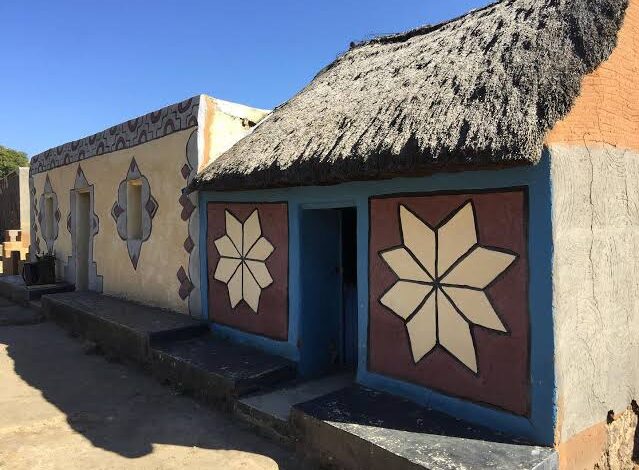20 Things You Should Know About Litema

Litema is a unique and traditional form of art that embodies the cultural heritage of the Basotho people in Lesotho. Characterized by intricate geometric patterns and vibrant colors, Litema is used to decorate homes and walls, showcasing not only the artistic skills of its creators but also the deep-rooted traditions and beliefs of the Basotho community. Here are 20 things you should know about Litema:
1. What is Litema?
Litema refers to the traditional Basotho art of decorating houses and walls with intricate patterns using earth pigments. This art form is unique to Lesotho and reflects the rich cultural heritage of the Basotho people.
2. Historical Roots:
The practice of Litema dates back centuries and has its origins in the Basotho’s pre-colonial history. It was traditionally used to beautify homes and showcase the identity of the inhabitants.
3. Cultural Significance:
Litema is more than just decoration; it represents the Basotho people’s beliefs, values, and connection to their land. The patterns often carry deep meanings related to fertility, protection, and family heritage.
4. Techniques and Materials:
Artists use natural materials such as clay, ochre, and other earth pigments to create the vibrant colors seen in Litema designs. The application process often involves hand-painting the designs directly onto the walls.
5. Geometric Patterns:
Litema designs are characterized by geometric shapes and motifs, including triangles, circles, and lines. These patterns can be symbolic and often vary between regions and families, reflecting local traditions.
6. Seasonal Practice:
Litema is typically applied during specific times of the year, often coinciding with agricultural cycles. The best time to paint is usually during the dry season when the earth is easy to work with.
7. Community Involvement:
The process of creating Litema often involves community participation. Neighbors and family members come together to assist in the painting process, fostering social bonds and cultural exchange.
8. Preservation of Tradition:
Efforts are underway to preserve the tradition of Litema, as modern housing and building materials threaten its practice. Cultural organizations are promoting awareness and education about this art form.
9. Modern Interpretations:
Contemporary artists are incorporating Litema into modern art and design, using the traditional patterns in various forms such as textiles, jewelry, and home decor. This fusion helps to keep the tradition alive.
10. Litema as Identity:
The distinct styles of Litema can signify different clans or family lineages within the Basotho community. Each family may have its unique designs, serving as a marker of identity and heritage.
11. Influence of Geography:
The patterns of Litema can vary significantly based on geographical location, with different regions of Lesotho showcasing unique styles influenced by local culture and environment.
12. Economic Impact:
Litema can contribute to local economies as artists sell their work and as tourism grows around cultural experiences, including workshops and guided tours focusing on this traditional art.
13. Teaching and Learning:
Litema is often passed down through generations, with older family members teaching younger ones the techniques and meanings behind the patterns, ensuring the art form remains vibrant.
14. Symbolism of Colors:
Different colors used in Litema hold specific meanings, with red often symbolizing sacrifice, black representing the earth, and white denoting purity. These colors enhance the storytelling aspect of the designs.
15. Use in Ceremonies:
Litema patterns can be found in ceremonial contexts, such as during weddings or other significant life events, where beautifully decorated homes create a festive atmosphere.
16. Environmental Connection:
The use of natural pigments and materials reflects the Basotho people’s deep connection to their environment, emphasizing sustainability and respect for nature.
17. Art as Resistance:
In the face of colonialism and modernization, Litema has served as a form of cultural resistance, allowing the Basotho people to express their identity and heritage.
18. Recognition and Awards:
Litema has gained recognition on international platforms, with artists receiving awards for their work that reflects this traditional form of expression, promoting Lesotho’s cultural heritage globally.
19. Role in Tourism:
Cultural tourism centered around Litema attracts visitors interested in learning about Basotho traditions. Tours often include opportunities to engage with artists and participate in Litema workshops.
20. Future of Litema:
The future of Litema depends on the continued appreciation and practice of this art form. As awareness grows, there is hope that Litema will thrive alongside modern influences, maintaining its significance in Basotho culture.
In summary, Litema is a vibrant and meaningful art form that encapsulates the essence of Basotho culture. Through its intricate designs and rich symbolism, Litema continues to tell the stories of the Basotho people, ensuring that their heritage endures for future generations.




